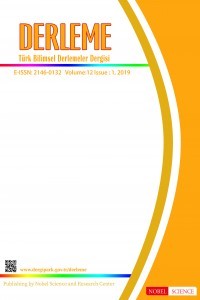Formation and Distribution of Gypsic Soils in Jordan
Formation and Distribution of Gypsic Soils in Jordan
Gypsic soils often have good potential for both rainfed and irrigated cropping. In recent decades, there has been a significant increase in using gypsic soils because of a need to extend agricultural production into previously non-cultivated arid and semi-arid regions. Gypsum is a common component in soils of arid areas of Jordan. The purpose of this paper is to investigate the processes of formation of gypsic horizons and their pedofeatures. The study area is located in the Azraq basin in the northeastern region of Jordan. Seven representative profiles were selected for laboratory analysis. Soil samples were taken from genetic horizons for the laboratory analyses. Occurrence of gypsum in soils of the study area indicates that local climatic conditions with low rainfall do not allow leaching of weakly soluble gypsum. The pedogenetic processes are very slightly expressed and consist mainly of a slight bioaccumulation of humus and nutrients reflected in an ochric A horizon , and a slight migration of gypsum and accumulation of gypsum in a subsurface gypsic or petrogypsic horizon, clay illuviation and leaching of the soluble salts. The studied soils belong to the Haplogypsids (Haplic Gypsisols); Argigypsids (Argic Gypsisols); and Calcigypsids (Calcic Gypsisols) great groups
Keywords:
gypsic soils aridic, soil maps, GIS,
- Başlangıç: 2008
- Yayıncı: Nobel Bilim ve Araştırma Merkezi Limited
Sayıdaki Diğer Makaleler
Formation and Distribution of Gypsic Soils in Jordan
Sa’eb A. KHRESAT, Jawad AL-BAKRİ, Brenda BUCK
Tatlı Su Protozoonları ve Önemi
Naciye Gülkız ŞENLER, İsmail YILDIZ
Arsenic Bioaccumulation in Seaweeds
Demet KOCATEPE, Gökay TAŞKAYA, Hülya TURAN, Yalçın KAYA
Taze Kayısının Dünya ve Türkiye’deki Mevcut Durumu
Yavuz TOPCU, Ahmet Semih UZUNDUMLU
